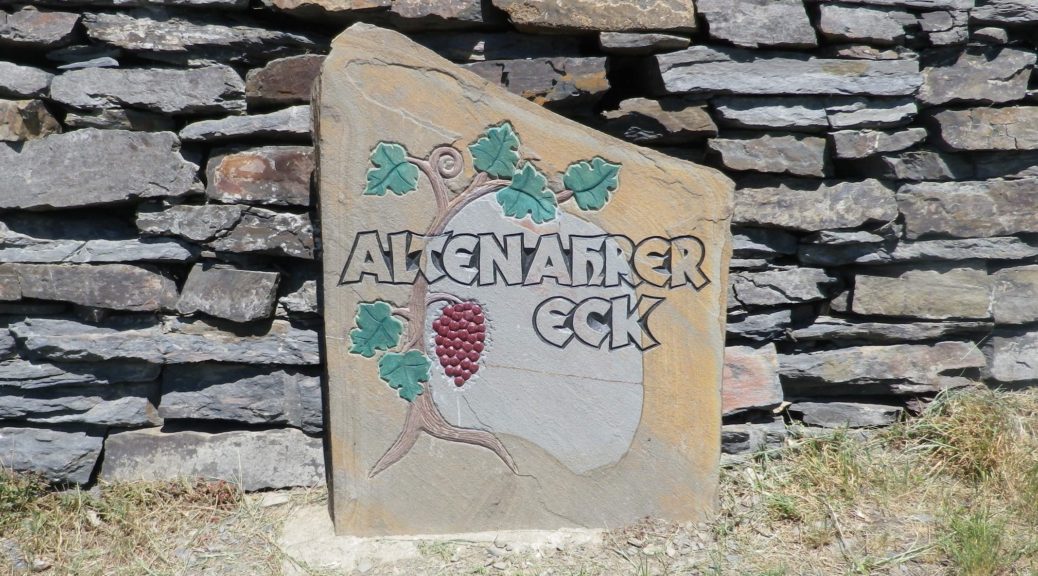What I Learned
Germany’s Ahr Wine Region, almost 50 kilometers north of the Moselle at Koblenz, is the Rhineland-Palatinate’s northern-most wine region, though it is not Germany’s northern most wine region. (That honor goes to the Saale-Umstrut region in Saxony.) But it is the furthest north red wine region in Germany. Until seen, it would be hard to credit that red varietals could ripen well enough this far north. But the vines grow on steep, mostly south-facing slopes of dark volcanic rock, along a very narrow valley that runs (in a very serpentine fashion) from west to east. Nature and geologic activity have combined to create some ideal conditions for red varietals here, with volcanic stone soils in the western end of the valley, and loess soils in the eastern end of the valley, as it approaches the Rhine.
With only about 560 hectares, it is one of the smallest wine regions in Germany. Red wine predominates, with about 540 of those 560 hectares dedicated to red varietals. Spaetburgunder (Pinot Noir) is the most widely planted varietal, but Domina, Regent, as well as Dornfelder and Portugieser, are other red varietals that are also planted throughout the Ahr valley. The red Fruehburgunder varietal is a regional specialty.
Wine making has historically been a cooperative affair here. Kloster Marienthal, founded in 1137, has a long history of wine-making. As the name implies, it was formerly a monastery, which needed wine for its services. Abandoned for over 100 years, it became the state wine domain in 1925. A near-by wine cooperative (winzergenossenschaft) claims to be the oldest wine cooperative in the world. The Mayschoss-Altenahr cooperative was founded in 1868 with 18 vintner members, now boasts about 420!
One final word about Ahr wines: They are especially difficult to find outside the region!
What I Tasted
2016 Spaetburgunder, Blanc de Noir, Trocken, Deutsche Qualitaetswein, Winzergenossenschaft Mayschoss Altenahr: A dry red wine vinified white, a light medium gold color with a slight tinge of pink; floral nose, with floral, vanilla and slight ripe peach flavor, very smooth overall.
2015 Rose, Heimat, Trocken, Deutschen Qualitaetswein, Josten Klein: A dry red wine (Spaetburgunder) with dark salmon pink color; floral and red berry nose, with berry and mineral flavors; very mild tannins.
2015 Spaetburgunder, Ahr-Rose, Trocken, Qualitaetswein bA, Weingut Meyer-Naekel, VDP (Dernau): A dry rose wine with pink grapefruit color, floral and sweet berry nose, with flavors of the same; slightly tart, with no appreciable tannins.
Sekt, Cuvee CK, Brut, Winzerhof Koertgen (Ahrweiler): A dry, sparkling wine cuvee (Pinot Noir, Weissburgunder, Chardonnay), with medium gold color and lively bubbles; slight floral and yeast notes on the nose, with fruity and bread flavors; medium acidity.
